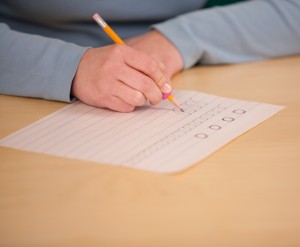Is the future of cursive writing doomed? 
In this modern age of using keyboards and moving our thumbs on smart phones to write cryptic notes in our attempts to communicate, are we losing something important? Students no longer have teachers peering over their shoulders to make sure they are holding their pencil correctly and forming their letters properly. Many school districts are no longer teaching cursive, citing it as an outdated mode of communication in this world of modern technology.
Handwriting and our brain
Some researchers find that the act of handwriting is actually important to cognitive thinking and the sensorimotor region in our brain. When we form letters with our hand instead of pushing a key, we are making a connection with the movement of our hand and the visual act of seeing the letter as our eyes guide our hand in the formation of that letter. We are reading and writing at the same time. We are forming whole words with visually guided fine-motor movements, which are then imprinted on our brain. How do we know which way the “bubble” on the “b” should go if we’ve only pushed a key with our index finger? For some, remembering how to spell a word often involves motor memory—they need to write it to recognize it.
Integrating Skills
Associate professor Anne Mangen from the University of Stavangers Reading Centre in Stavanger, Norway, co-authored a study highlighting the importance of handwriting vs. typing. She states, “This is evidenced in tests that reveal that the act of handwriting — literally the feeling of touching a pen to paper — appears to imprint a “motor memory” in the sensorimotor region of the brain.”
Mangen went on to explain that the process of handwriting encourages the visual recognition of letters and words, which suggests these two separate skills of reading and writing are, in fact, linked. This study included brain scans that showed that while learning by handwriting prompted activity in a part of the brain known as Broca’s area, whereas learning by keyboarding caused little or no such activity.
Brain Training
Dr. William Klemm says cursive writing makes kids smarter. In his article in Psychology Today, he states “writing helps train the brain to integrate visual, and tactile information, and fine motor dexterity. School systems, driven by ill-informed ideologues and federal mandate, are becoming obsessed with testing knowledge at the expense of training kids to develop better capacity for acquiring knowledge.”
Let’s hope that those with the power to keep cursive as part of core curriculum in schools across America look and respond accordingly to this research in their decision making.
Find Dr. William Klemm’s article in Psychology Today at:
http://www.psychologytoday.com/blog/memory-medic/201303/what-learning-cursive-does-your-brain
And for more on brain function, visit the U.S. National Library of Medicine
